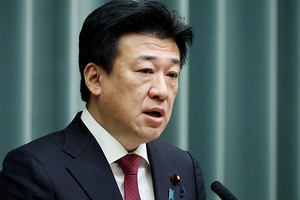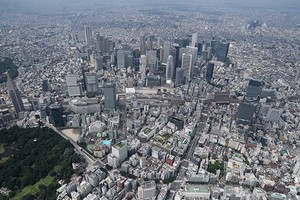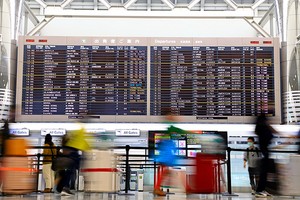By KENICHIRO HATANAKA/ Staff Writer
April 10, 2025 at 18:43 JST
 A roast beef bowl made with “Tokachi Shihoro beef,” a brand of Holstein beef, is a popular menu item at the Sapporo restaurant Minoru Dining. (Kenichiro Hatanaka)
A roast beef bowl made with “Tokachi Shihoro beef,” a brand of Holstein beef, is a popular menu item at the Sapporo restaurant Minoru Dining. (Kenichiro Hatanaka)
Hokkaido, already known as the “kingdom of dairy farming,” has earned a new accolade for its beef.
According to the central government’s statistics on agricultural output for 2023 that were released at the end of 2024, Hokkaido surpassed Kagoshima Prefecture as the country's top beef cattle producer for the first time.
Record-keeping, which began in 1960, involves evaluating a prefecture's agricultural production in terms of monetary value and current condition of its agriculture. This is calculated based on annual production volume and prices at the time of shipment from farmers.
According to statistics compiled in 2023, Hokkaido's beef cattle production was 122.4 billion yen ($835 million), up 2.1 billion yen from the previous year.
Meanwhile, Kagoshima Prefecture, known as the “kingdom of livestock breeding,” saw its production fall 2 billion yen for a total of 120.8 billion yen.
In 2023, Hokkaido topped the nation with 1.35 trillion yen in output for all commodities. That same year, the market price fell due to a slump in demand for "Kuroge Wagyu" (Japanese Black) beef as a result of rising prices.
This directly affected Kagoshima's production as the Wagyu breed accounts for more than 90 percent of the cattle raised there.
On the other hand, varieties raised in Hokkaido consist almost equally of Wagyu, Holstein (or "Horusu") and crossbred cattle that are a mix of a female Holstein and male Kuroge Wagyu.
“The strength of Hokkaido is the perfect balance between the three types of cattle,” a senior official of Hokuren, a federation of agricultural cooperatives responsible for economic business under the JA (Japan Agricultural Cooperatives) Group Hokkaido.
“The market price of Wagyu has fallen, but the prices of Holstein and crossbred cattle have not collapsed,” the official added.
Holstein are essentially the face of dairy cattle, but the males are fattened for beef. Cuts are characterized as lean with little fat and chewy.
The crossbred variety, meanwhile, has both the fat and the lean flavor of Wagyu.
About 90 percent of the meat labeled as “Hokkaido beef” or “domestic beef” in supermarkets is either Holstein or crossbred beef, both less expensive than Wagyu.
In recent years, Hokkaido's entire livestock industry has been promoting the branding of all beef cattle.
Over the past 15 years, eight brands of Hokkaido beef have been registered as regional collective trademarks with the Japan Patent Office, including “Tokachi Wakaushi” of Shimizu town and “Shihoro beef” of Shihoro town.
“If we include smaller brands, there are more than 100 brands of beef in Hokkaido,” said a person in charge of the industry group.
However, it is not clear whether Hokkaido's “perfect balance” of cattle will continue in the long term.
Existing technology now can breed female Holsteins with a 90 percent probability rate.
Furthermore, technology involving implanting eggs fertilized by Kuroge Wagyu cattle into female Holsteins is becoming more common, and has turned into a source of income for dairy farmers whose businesses are struggling.
The industry is unanimous in its view that the ratio of Wagyu cattle with a higher commercial value will increase in the future.
“It is a good thing that high-quality branded beef is being bred in various parts of Hokkaido thanks to the efforts of producers," said Keigo Kuchida, a professor of meat quality evaluation at Obihiro University of Agriculture and Veterinary Medicine. "However, they have not yet been able to compete with long-established beef brands such as 'Matsusaka-ushi,' 'Kobe beef' and 'Yonezawa beef.'"
Kuchida, who is familiar with the northern prefecture's livestock breeding situation, added, "Although there are some difficulties because Hokkaido is so large, it would be good to have a strategy to promote 'Hokkaido' at the forefront and market it nationwide as a major beef-producing region.”




















A peek through the music industry’s curtain at the producers who harnessed social media to help their idols go global.
A series based on diplomatic documents declassified by Japan’s Foreign Ministry
Here is a collection of first-hand accounts by “hibakusha” atomic bomb survivors.
Cooking experts, chefs and others involved in the field of food introduce their special recipes intertwined with their paths in life.
A series about Japanese-Americans and their memories of World War II